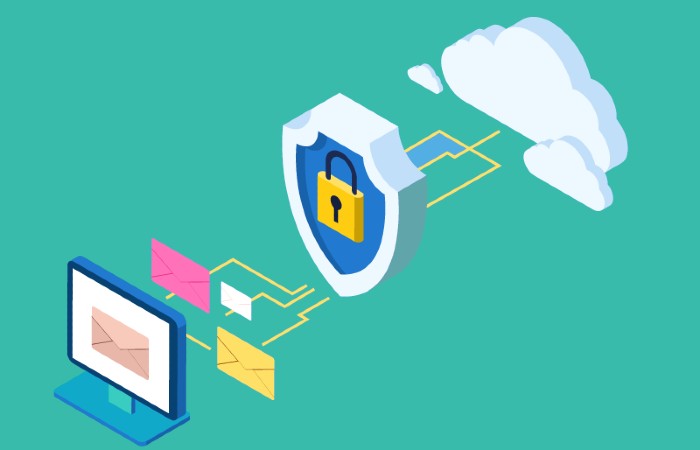Email Sender Reputation – Get To Know How It Works & Learn How To Improve It For Increased Customer Engagement
The key to ensuring excellent email deliverability is to build and maintain a robust email sender reputation.
Email sender reputation is the single most critical factor affecting email deliverability. Let us understand the concept and learn one can improve the sender’s reputation for better email engagement.
Table of Contents

Email Sender Reputation – The Concept
It is not easy for a business with a low sender reputation to get a recipient to open and read the emails it sends. Email sender reputation is a combination of two crucial concepts – IP reputation and domain reputation. Let’s see what they are.
IP Reputation
Everyone who sends emails must be conversant with the term ‘IP address’. Though one can purchase private IPs, they are expensive. Hence, a significant proportion of email senders rely on shared IPs provided by their email service provider (ESP).
Each IP address has a specific reputation that tells email servers whether they should approve emails originating from that source. Email delivery often fails when the sender’s reputation is low. Building up an IP reputation can take years, but it only takes a single failed campaign to ruin it overnight.
Domain Reputation
There is a deep link between IP reputation and sender domain reputation. If your domain has a notorious reputation for sending spam messages, it makes no difference even if you use a reputed IP address from one of the best ESPs.
The vice versa is also true. If your IP has a low reputation, it matters little if your domain has an excellent sending history.
Factors Impacting Sender Reputation
Many factors impact reputation. Let’s now try to understand such factors that make or mar a sender’s reputation.
- Complaints of spam – All emails come with an option for the receiver to report it as spam. The higher the number of ‘Report as Spam’ hits on your emails, the worse your spam reputation will be.
- Spam traps – ISPs set up specific test email accounts that resemble the regular ones. These are spam traps. Sending emails to them can get your IP on one of the publicly available blacklists.
- Sending history – Sending history is a broad term covering various aspects, like the volume and frequency of sending emails. Spam is usually sent in huge volumes.
- Soft and hard bounces – Soft bounce is a temporary delivery problem, whereas a hard bounce occurs when your email account does not exist. It can happen when you delete your email account or if someone mistypes your account name.
- Engagement – It focuses on your past performances and considers the frequency with which your readers open your emails and reply to them.
- ‘Unsubscribe’ option – Every promotional email has an unsubscribe option that readers can exercise at any time to stop receiving emails from a particular address. As more people use the feature, the sender’s reputation will come down.
Thus, past performance plays a crucial role in maintaining a sender’s reputation. If people do not care to open a sender’s emails or reply to them or unsubscribe or report them as spam, their sender’s reputation takes a severe dent. On the other hand, if such emails have a healthy, engaged list, the chances of delivering the next email are high.
Checking Sender Reputation
Now, the question is, how can one check sender reputation? Many sender-reputation checking tools (such as SPF record checker) are available in the market that help track and improve email deliverability. There are free and paid tools with numerous features and capabilities to help with various aspects of the sender’s reputation. Google Postmaster tools are examples of free services that help track data, such as IP reputation, Gmail delivery errors, and domain reputation for high-volume email senders. Below are the factors checked by various reputation check services.
- Notoriety For Spam: Reputation check services can check the spam complaint rate of a sender and the number of spam traps to which its emails are delivered.
- Domain Reputation: They provide information on a domain’s email and web reputations. The information related to the history of associations and the activation of a domain can also be obtained.
- DNS And Server Reputation: They can provide DNS and mail server info so that one knows how popular they are.
- IP Address Grading: It may provide a measure of the reliability of an IP address, like marking on a scale of 1 to 100. The higher the rating, the better is the reputation. One should consider ways to improve one’s reputation when the score is low.
- IP Address Classification: Some services classify IP reputation as Good, Neutral, and Poor. A ‘Good’ rating indicates the absence of harmful behavior, whereas a ‘Neutral’ score suggests a reasonable reputation level. A ‘Poor’ rating is an indication for you to improve your reputation considerably.
- Reputation Comparison: Reputation comparison focuses on deliverability and compares a sender with other enterprises. The service assesses various aspects and provides a score on each parameter. Thus, one can compare their standing vis-à-vis other businesses in the industry.
There are many more options available to help one check and rate one’s sender reputation.(Please note that you can also use tools such as SPF generator if you’re at the initial stages and only starting with the learning of concepts such as Sender Policy Framework, DMARC, DKIM, and so on.)
How To Improve Your Sender Reputation?
After you have checked the reputation, here’s how you can improve it.
Authenticating Sender Domain
Authenticating your domain assures the incoming servers by announcing who you are. It makes it challenging for any phishing attempt to happen on your domain. The authentication standards include SPF, DKIM, and DMARC. Having these standards in place guarantees email delivery to a significant extent.(You must also remember to perform an SPF record check, DMARC record, and a DMARC record check individually to make sure that all protocols have been put in place correctly.)
Building Organic Growth
As mentioned above, spam reports, traps, bounces, and unsubscribes can affect the sender’s reputation. One can avoid these pitfalls if one grows the mailing list organically. One way of doing so is to rely on double opt-in, where each subscriber has to confirm their subscription.
Proper communication can also help to grow the mailing list organically. It ensures that you have people who want to be on it. If they leave soon, it could hurt your reputation.
Cleaning The Mailing List Regularly
It also does not harm to clean your mailing list regularly. It can happen that your business email contacts would have moved over to new roles, whereby they would have deactivated their old email accounts. Emails sent to such entities can bounce. It can be a soft bounce where there would be an autoresponder. A hard bounce arises when the account no longer exists. Generally, ESPs remove hard bounces immediately. However, you can prune down the list manually, as well.
There could also be cases where the receiver would never have opened your emails, and they might head directly to the spam folder. You should proceed to separate such inactive content from the primary subscriber group. You can try sending a re-engagement email to try to regain their interest. If you do not receive a response, it is better to remove them from your mailing list.
Work On Improving Engagement
The modern email clients learn from user behavior. For instance, they check for emails that recipients never open and remove them from their regular inbox. Though it ensures a better user experience, it can prove detrimental to businesses with low engagement. However, there are methods with which enterprises can improve customer-engagement, such as the ones listed below.
- Testing innovative subject lines – The subject line should be such that people would want to open the email. Using words like ‘Discount, Free, 90% off’ etc. can end up as spam.
- Change the frequency of emails – Sending too many emails can have a negative effect. If you are sending a weekly newsletter, make sure you send it at the same time. Allowing the reader to choose their preferred frequency is advisable. If they have complete control of what and how often they receive, they are less likely to unsubscribe or abandon the mailing list.
- Ensure useful content – An essential way for businesses to improve engagement is to improve the content because content has immense value. Valuable content can tempt the recipients to click on the ‘call to action’ buttons easily. The primary objective is to have content that works for the audience.
Final Word
This article has examined the concept of sender reputation from all angles and answered a few questions you may have on the subject. It can especially prove useful to businesses that rely on email campaigns for their marketing purposes. Following the correct practices will ensure improvement in your business’s email reputation.
Join the thousands of organizations that use DuoCircle
Find out how affordable it is for your organization today and be pleasantly surprised.
